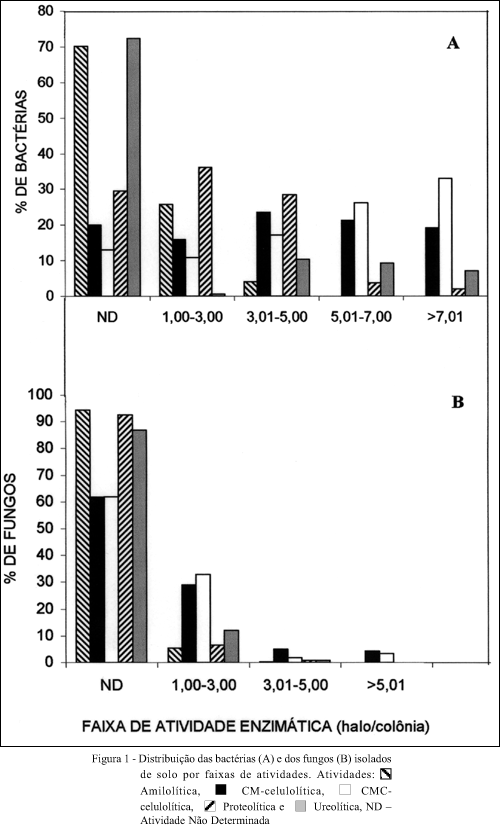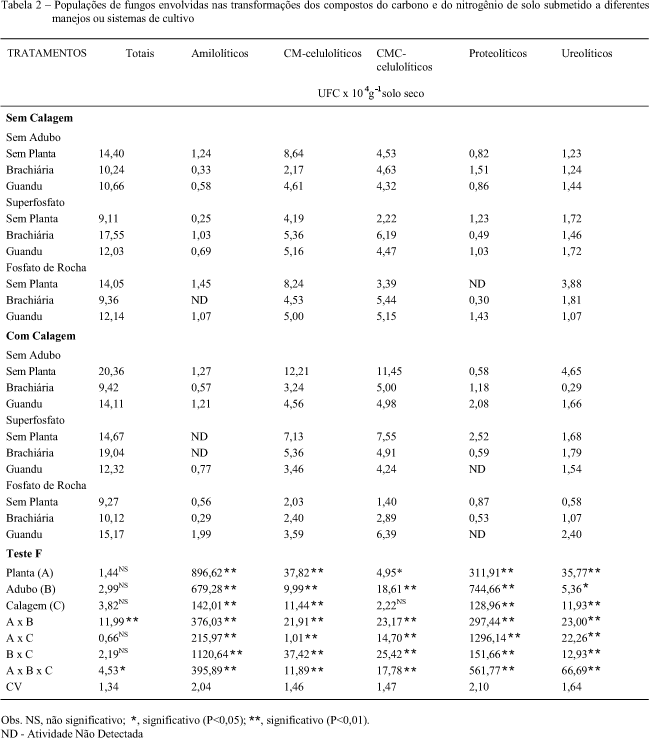The effect of plant cultures, Brachiaria ruziziensis, Cajanus cajan, of the phosphate fertilizers and of the liming on amilolytic, cellulolytic, proteolytic and ureolytic bacteria and fungi were investigated. The proportion of bacteria with enzymatic activity in relation to the total varied from 25 to 87% and fungi from 2 to 36%. The groups of bacteria increased its population in plots added with superphosphate and lime in relation to the other treatments (except the ureolytic that increased in plots not fertilized) and the fungi enhanced in the unfertilized (except the ureolytics that increased with superphosphate) and limed plots. The highest counts of ureolytic bacteria and proteolytic fungi were found in the soil cultivated with B. ruziziensis. The CM-cellulolytic (CM, cellulose microcrystalline) and ureolytic fungi enhanced in the uncultivated plots and the amilolytic and CMC-cellulolytic (CMC, carboxymethylcellulose) in the plots cultivated with C. cajan. The other groups of bacteria were not influenced by the cultivation system. The population and the enzymatic ability of the fungi groups were smaller than the bacteria, suggesting a smaller participation in the nutrients cycling in the soil. The bacteria presented multiple enzymatic activities, showing larger versatility than the fungi.
bacteria; fungi; amilolytic; cellulolytic; proteolytic; ureolytic; phosphorus; Brachiaria ruziziensis; Cajanus cajan



